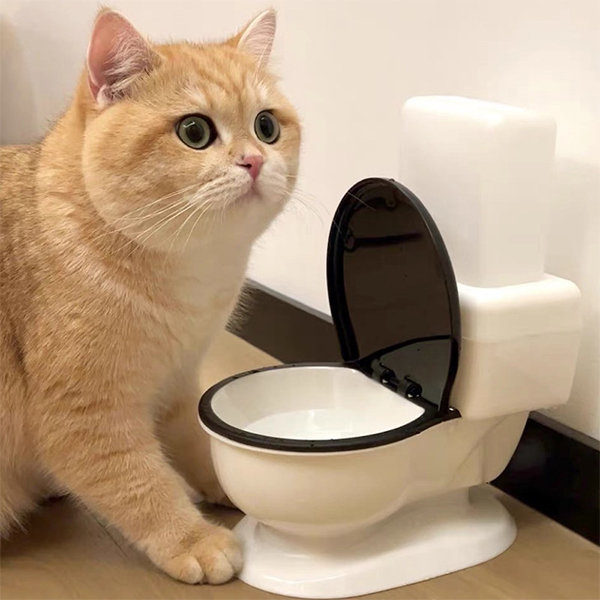The article author is making a number of great annotation about Don’t flush cat feces down the toilet in general in this content below.

Intro
As pet cat owners, it's vital to be mindful of exactly how we throw away our feline close friends' waste. While it might appear convenient to purge pet cat poop down the toilet, this practice can have damaging effects for both the environment and human health.
Environmental Impact
Flushing feline poop introduces dangerous virus and bloodsuckers right into the water, posturing a substantial danger to water environments. These impurities can negatively impact marine life and compromise water quality.
Wellness Risks
In addition to environmental worries, flushing cat waste can also posture health and wellness risks to human beings. Cat feces might contain Toxoplasma gondii, a bloodsucker that can cause toxoplasmosis-- a possibly extreme disease, specifically for pregnant ladies and people with damaged immune systems.
Alternatives to Flushing
The good news is, there are safer and much more accountable means to get rid of feline poop. Take into consideration the adhering to alternatives:
1. Scoop and Dispose in Trash
The most typical technique of dealing with feline poop is to scoop it into a naturally degradable bag and throw it in the trash. Make certain to make use of a committed trash scoop and deal with the waste promptly.
2. Usage Biodegradable Litter
Select naturally degradable cat clutter made from materials such as corn or wheat. These litters are eco-friendly and can be safely disposed of in the garbage.
3. Bury in the Yard
If you have a backyard, consider hiding feline waste in a designated area far from vegetable yards and water sources. Make sure to dig deep adequate to prevent contamination of groundwater.
4. Set Up a Pet Waste Disposal System
Buy an animal garbage disposal system specifically developed for feline waste. These systems make use of enzymes to break down the waste, reducing odor and environmental effect.
Verdict
Responsible pet ownership prolongs beyond supplying food and sanctuary-- it likewise includes correct waste monitoring. By avoiding purging feline poop down the commode and selecting alternative disposal approaches, we can lessen our ecological footprint and safeguard human health and wellness.
Why Can’t I Flush Cat Poop?
It Spreads a Parasite
Cats are frequently infected with a parasite called toxoplasma gondii. The parasite causes an infection called toxoplasmosis. It is usually harmless to cats. The parasite only uses cat poop as a host for its eggs. Otherwise, the cat’s immune system usually keeps the infection at low enough levels to maintain its own health. But it does not stop the develop of eggs. These eggs are tiny and surprisingly tough. They may survive for a year before they begin to grow. But that’s the problem.
Our wastewater system is not designed to deal with toxoplasmosis eggs. Instead, most eggs will flush from your toilet into sewers and wastewater management plants. After the sewage is treated for many other harmful things in it, it is typically released into local rivers, lakes, or oceans. Here, the toxoplasmosis eggs can find new hosts, including starfish, crabs, otters, and many other wildlife. For many, this is a significant risk to their health. Toxoplasmosis can also end up infecting water sources that are important for agriculture, which means our deer, pigs, and sheep can get infected too.
Is There Risk to Humans?
There can be a risk to human life from flushing cat poop down the toilet. If you do so, the parasites from your cat’s poop can end up in shellfish, game animals, or livestock. If this meat is then served raw or undercooked, the people who eat it can get sick.
In fact, according to the CDC, 40 million people in the United States are infected with toxoplasma gondii. They get it from exposure to infected seafood, or from some kind of cat poop contamination, like drinking from a stream that is contaminated or touching anything that has come into contact with cat poop. That includes just cleaning a cat litter box.
Most people who get infected with these parasites will not develop any symptoms. However, for pregnant women or for those with compromised immune systems, the parasite can cause severe health problems.
How to Handle Cat Poop
The best way to handle cat poop is actually to clean the box more often. The eggs that the parasite sheds will not become active until one to five days after the cat poops. That means that if you clean daily, you’re much less likely to come into direct contact with infectious eggs.
That said, always dispose of cat poop in the garbage and not down the toilet. Wash your hands before and after you clean the litter box, and bring the bag of poop right outside to your garbage bins.
https://trenchlesssolutionsusa.com/why-cant-i-flush-cat-poop/

We had been guided to that report on Can You Flush Cat Poo or Litter Down the Toilet? from a good friend on our other website. For those who enjoyed reading our blog posting kindly don't forget to pass it around. Many thanks for taking the time to read it.
Schedule A Service Call